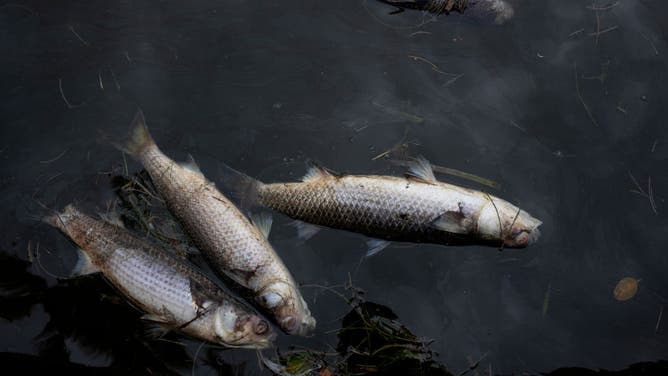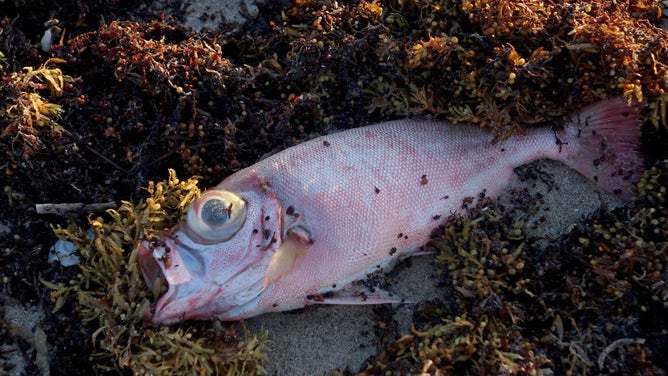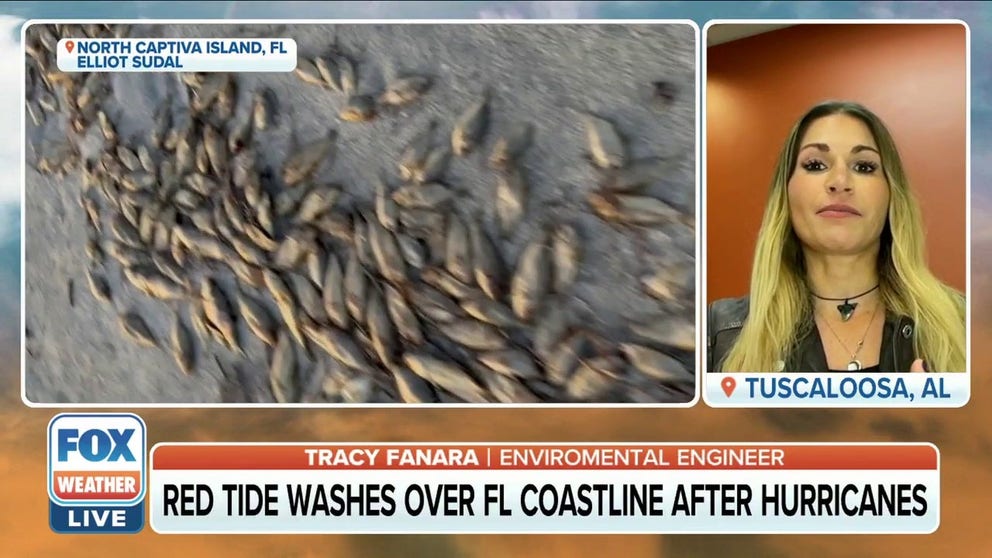Harmful red tide emerges along Florida coastline after Hurricanes Ian and Nicole
The blooms are having devastating consequences, causing mass fish kills along the Southwest Florida beaches.
Red tide harming Florida's beaches, marine life following hurricanes
Environmental Engineer Tracy Fanara tells FOX Weather that Florida’s shores are witnessing mass fish kills due to the increase in algae blooms. Fanara indicates there are increases in red tide from Manatee County down to Collier County.
TAMPA BAY – Red tide, or a harmful bloom of algae, is harming Florida beaches and marine life after Hurricanes Ian and Nicole swept through the Sunshine State.
Upwelling events and mixing from Ian may have initiated the algal bloom when the storm struck Southwestern Florida in late September. The bloom left behind appeared as patches near the coastlines of Sarasota, Charlotte and Lee Counties.
Nicole, however, exacerbated the situation as currents during the storm pushed the patches closer to shore.

CAPTIVA, FLORIDA - JANUARY 4: Dead fish have washed ashore in the thousands due to a red tide on January 4, 2021 in Captiva Island, Florida. Red tide is a toxic algae bloom, and can occur naturally or be accelerated by pollutants in the water. (Photo by Andrew Lichtenstein/Corbis via Getty Images)
(Andrew Lichtenstein/Corbis / Getty Images)
According to environmental engineer Tracy Fanara, the storm also created nutrient-rich runoff that mixed with the bloom near the coastline, causing it to grow with devastating consequences.
"Now, we're seeing these mass fish kills where a bloom can basically feed itself," Fanara said.
The algal bloom can also be dangerous for humans. Humans who eat any fish or shellfish that have consumed toxic algae from a red tide area will then ingest those toxins. They may then become sick and, in some cases, die.

A dead fish is seen in the seaweed at Oceanfront Park in Boynton Beach, Fla., Thursday, Oct. 4, 2018. Officials have confirmed that red tide has appeared on Florida's Atlantic Coast. (Joe Cavaretta/South Florida Sun Sentinel/Tribune News Service via Getty Images)
(Joe Cavaretta/South Florida Sun Sentinel/Tribune / Getty Images)
Fanara noted that the current red tide in Southwest Florida has spread, spanning a range between Manatee County and Collier County.
HOW TO WATCH FOX WEATHER ON TV
How long this bloom will last is still in question. According to Fanara, blooms have historically lasted two to six months, but blooms in recent years have lasted longer.
"There are so many different factors that come into play when we're talking about these blooms’ initiation, dissipation," she said. "So, it's really just tough to say right now how long this bloom is going to last."
